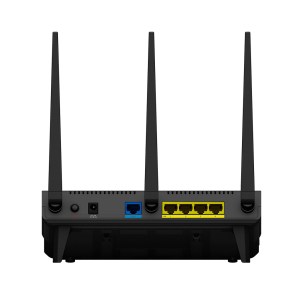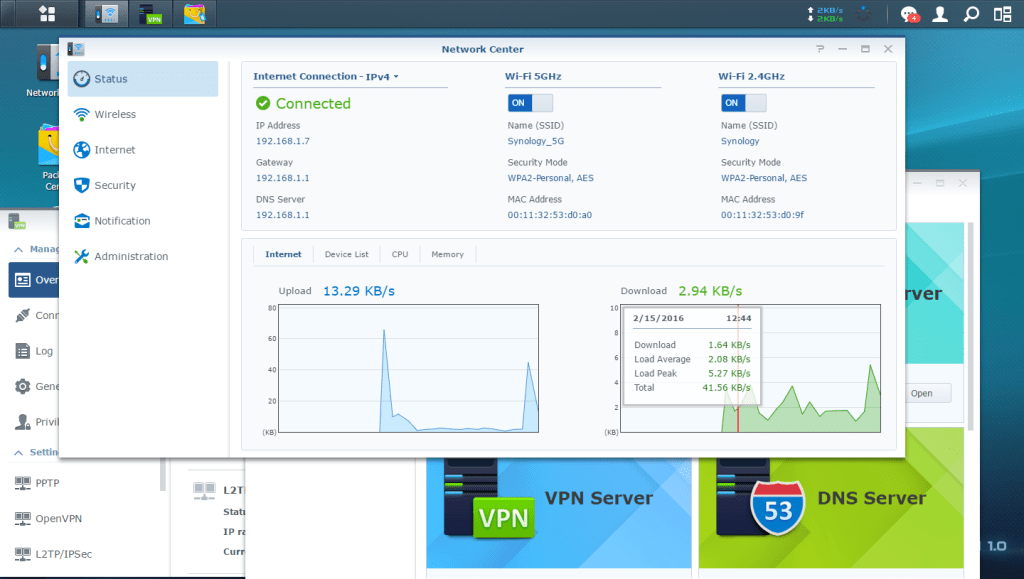
Synology isn’t exactly a household name in the U.S. yet, but the Taiwanese company is definitely trying to make more of a name for itself here. The company has long offered its various DiskStation network-attached storage (NAS) devices, but now it’s also bringing its first router (the RT1900ac) to the U.S. market.
The Synology router is now available in the U.S. for a suggested retail price of $149.99. That puts it in line with other mid-range 802.11ac routers likes TP-LINK’s popular Archer C8 or the Netgear AC1750, which feature somewhat similar hardware specs. It’s also cheaper than Google’s current lineup of OnHub routers, which both clock in at over $199.
 For the longest time, routers weren’t all that interesting. Their hardware did what it was supposed to, but the software was often more than clunky. That has changed over the last few years and with OnHub, Google showed that it’s possible to make a piece of smartly designed hardware that was also easy to use and — for most people — probably resulted in a significant upgrade from their current router (and especially the built-in one in their cable modem).
For the longest time, routers weren’t all that interesting. Their hardware did what it was supposed to, but the software was often more than clunky. That has changed over the last few years and with OnHub, Google showed that it’s possible to make a piece of smartly designed hardware that was also easy to use and — for most people — probably resulted in a significant upgrade from their current router (and especially the built-in one in their cable modem).
While Google tried to make using its routers as easy as possible by hiding a lot of the complexity, Synology also makes setting the router up extremely easy, but if you want to delve deeper, it doesn’t stop you from fiddling with any of the settings.
Getting started with the router is simply a matter of plugging in the power and Ethernet cables, and setting up an admin account and password for your WiFi network on the device. That shouldn’t take more than a minute. After that, you’re online.
You can easily create a guest network (either on a 5GHz or 2.4GHz network — or both — and with our without access to your local network), set up beamforming to focus your signal toward a certain device and manage bandwidth usage on a per-application basis.
In addition, you can install new apps on the router that turn it into a VPN, DNS file and media server with an attached USB drive (there is also an SD card slot), for example. And if the blinking lights on the front of the router annoy you while you try to sleep, you can turn them on and off on a set schedule.
All of this is done through Synology’s Router Manager (SRM), which is basically a desktop-like interface. From there, you manage all of the router’s functions through a basic point-and-click interface. If you’ve used one of Synology’s NAS devices before (which also nicely integrate with the router), that interface will look very familiar.
At the end of the day, chances are you just want your router to work. While it doesn’t offer the kind of nifty automatic channel switching that Google’s OnHub introduced, the router’s overall performance is pretty much on par with that from my TP-LINK OnHub. Transferring files between devices is fast, YouTube videos on my Xbox One play without delays and buffering, and all of my Wi-Fi connections have been rock solid. Add all of the extra features that Synology offers on top of that and you have yourself a very solid router.



Comments
Post a Comment